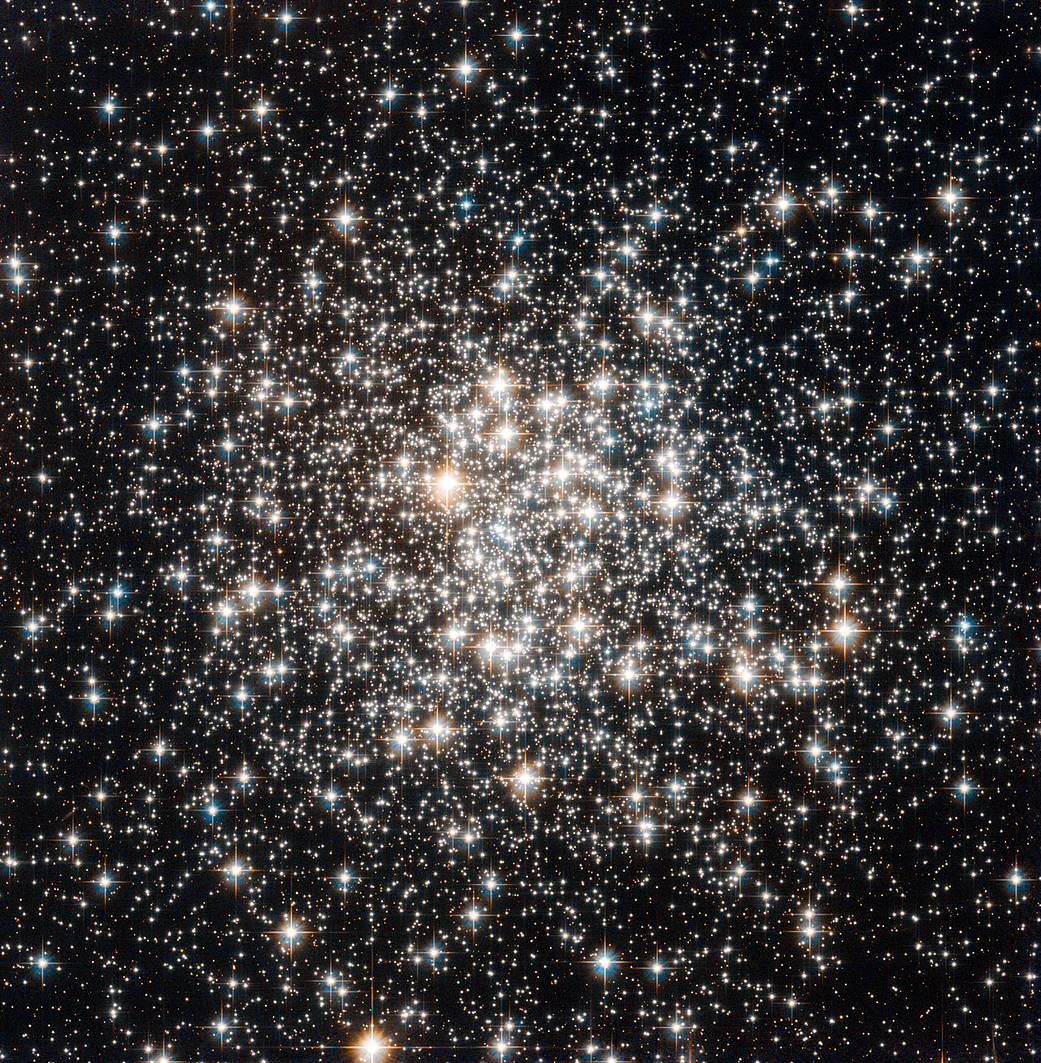The Hubble Space Telescope captured a crowd of stars that looks rather like a stadium darkened before a show, lit only by the flashbulbs of the audience’s cameras. Yet the many stars of this object, known as Messier 107, are not a fleeting phenomenon, at least by human reckoning of time – these ancient stars have gleamed for many billions of years.
Messier 107 is one of more than 150 globular star clusters found around the disc of the Milky Way galaxy. These spherical collections each contain hundreds of thousands of extremely old stars and are among the oldest objects in the Milky Way. The origin of globular clusters and their impact on galactic evolution remains somewhat unclear, so astronomers continue to study them.
Messier 107 can be found in the constellation of Ophiuchus (The Serpent Bearer) and is located about 20,000 light-years from our solar system.
French astronomer Pierre Méchain first noted the object in 1782, and British astronomer William Herschel documented it independently a year later. A Canadian astronomer, Helen Sawyer Hogg, added Messier 107 to Charles Messier’s famous astronomical catalogue in 1947.
Image Credit: ESA/NASA
哈勃太空望远镜拍摄到了一群恒星,看上去就像是一场演出前一片黑暗的体育场,仅由观众摄像机的闪光灯照亮。然而,这个被称为梅西耶107的天体中的许多恒星并不是一个转瞬即逝的现象,至少从人类的时间计算来看是这样的——这些古老的恒星已经闪耀了几十亿年。
梅西耶107是在银河系星系盘周围发现的150多个球状星团之一。这些球状集合每个都包含数十万颗非常古老的恒星,并且是银河系中最古老的物体之一。球状星团的起源及其对银河系演化的影响尚不清楚,所以天文学家仍在继续研究它们。
梅西耶107位于蛇夫座(蛇承载星座),距离我们的太阳系约2万光年。
法国天文学家皮埃尔·梅尚(Pierre Mechain)在1782年首次发现这个天体,一年后英国天文学家威廉·赫歇尔(William Herschel)对其进行独立记录。1947年,加拿大天文学家海伦·索耶·霍格(Helen Sawyer Hogg)将梅西耶107添加到查尔斯·梅西耶(Charles Messier)著名的天文目录中。
影像来源:ESA/NASA



